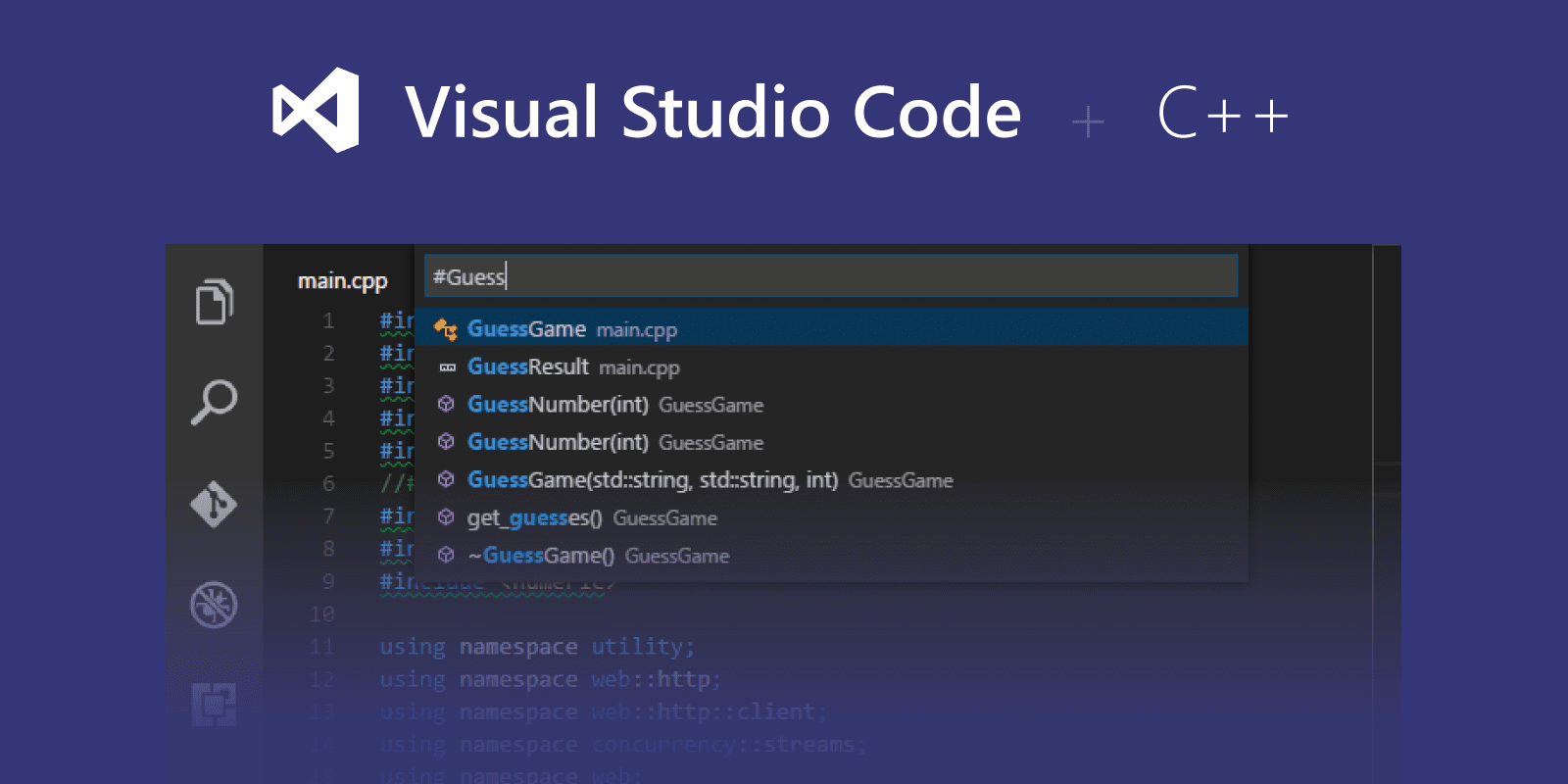
- #Visual studio code c++ mac install
- #Visual studio code c++ mac full
- #Visual studio code c++ mac code
You can’t have 2 files with the same name in the same directoryĪnd lastly the command $dir$fileNameWithoutExt So, the $dir is referring to the current folder (similar to the period symbol (.) that we used before) and then $file is referring to the opened file when you hit the play button and then and the -o flag is used so that if you run multiple files, you want to have multiple executables, because if you leave it as the default naming “a.out” you will remove the existing “a.out” that was generated When we hit the play button the code-runner detects your file name extension and runs the command accordingly, for C++ the command is "cpp": "cd $dir & g++ $fileName -o $fileNameWithoutExt & $dir$fileNameWithoutExt" So, if we look closely again at how the executerMap is defining the settings for C/C++ it is like the following If your variable can have multiple values instead of one, you put them in curly braces like this "variable" : "value"įor multiple values, we user the curly braces to include them, like this "variable" : Now the JSON syntax/format is very easy to understand, it is a comma, separated list of key-value pairs of strings what that means is, you define your variable name as a string between quotes and then a colon, ( :) then the value for your variable as a string between quotes as well.
#Visual studio code c++ mac full
“PATH” is where the terminal saves all the full paths for the programs.
#Visual studio code c++ mac code
Sounds hard? let’s just do it for VScode, open the Command Palette (⇧⌘P) and type “install” select “install code command in PATH” and hit enter. So, we can run any program from the terminal by giving it the full path to the program, and we also tell the terminal to save an alias name for that program so next time we run It, we just type the name of the program in the terminal. G++ and clang++ commands are also just paths that were aliased so that you don’t write the full path to your compiler (you can see the full path by typing the command “which g++” or “which clang++”) so if we expand it, it will be equivalent to this /Users/"UserName"/Desktop/a.out What we did was telling the terminal the full path to the “a.out” executable, the period symbol “.” is a special character that refers to your current directory. In the Unix terminal, the way you run an executable is by providing the full path to it, and the terminal will run your program, hence the command. That last command was /Users/"UserName"/hello The g++ is a compiler (just as clang++), so it asks g++ to compile hello.cpp and generate an executable output, however, it uses -o flag to set the generated executable name to “ hello” instead of the default name“ a.out”. the second command was: g++ hello.cpp -o hello This is exactly what we did before, the tilde character (~) that we used in “ ~/Desktop” actually expands to your home directory (your home directory is “/Users/”UserName”/) then ( /Desktop) to get to your CPP file location.

The first thing we notice is, it’s running the cd command cd /Users/"UserName"/Desktop Note: the & is used to run multiple commands in order, in one line.
#Visual studio code c++ mac install
Installing the command-line tools will install the clang compiler and it is a requirement to develop C++ regardless of IDE/Editor you choose.




 0 kommentar(er)
0 kommentar(er)
